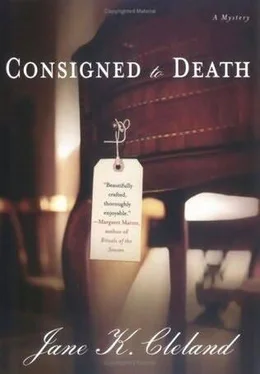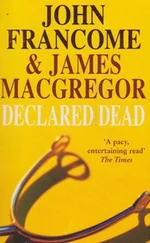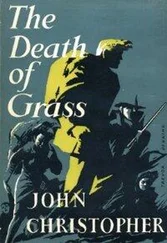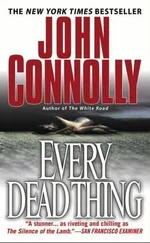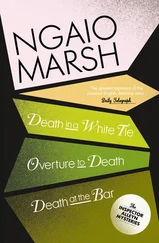I planned to secure the missing paintings and set the protocol we’d use in the appraisal before meeting Wes, and that required that I get to the Grant house by 5:30.
I didn’t make it. It was closer to 5:45 when I pulled up in front. A police officer stepped out onto the porch as I got out of my car. He was one of the young men I’d seen at the Rocky Point police station during one of my interrogations, and he looked tired.
I started up the walk, smiled, and said hello. “I’m Josie,” I said.
He nodded. “Chief Alverez said you’d be coming by.”
“And you are?…” I asked.
“Officer O’Hara.”
“May I enter?”
“Sure.” Officer O’Hara stepped aside and I went in.
“I’ve got to tell you,” I said to O’Hara, looking back with a smile, “I’m really glad you’re here.”
He looked surprised, as if he was more used to people objecting to him or something he was doing than he was to receiving thanks. Or maybe he thought I was being cagey, a murder suspect trying to lull a cop into believing in her innocence.
“I’ll stay out of your way, but I’ll be around,” he said matter-of-factly.
“Okay.” I shut the door, and through the window, I saw him sit on a bench and stretch his legs out in front of him.
I hurried into the study, turned on the lamps, and looked at the three Taverniers sitting side by side on the far wall, hanging from the crown molding on metal brackets. Reaching up, I lifted the painting closest to the door off its brackets, and gently lowered it until it rested on the carpet and against the wall. I examined the frame carefully, rotating the painting one turn at a time, carefully searching all sides. I twisted it so I could see the back, spotting nothing unusual in its construction, except that it was oversized, perhaps four or five inches deeper than it needed to be. The second Tavernier seemed to be constructed in the same way. I saw nothing odd. The third one, when I lifted it down, was noticeably lighter than the first two, and as soon as I positioned it against the wall, I saw a gap, as I expected.
The three-sided structure in the basement was designed to slip into the top of this frame like a drawer, sliding into place, meshing perfectly. No doubt, that was where the Renoir had been stored.
Returning my attention to the first painting, with its three-sided removable frame still in place, I tried to pry it loose. Nothing happened. I couldn’t see how to wedge it free. There was no handle or pulling device visible.
I unhooked my flashlight and leaning back on my heels, I examined the frame inch by inch, and there it was. On the top, in the center, was a tiny square plastic button, painted black to match the rest of the frame, and inlaid so perfectly, it was only by the closest examination that it ever would be found.
I pushed the button, and felt the spring-loaded apparatus nudge the top of the frame upward. Enough wood was now available that I could get a handhold and pull.
The frame was too large and heavy for me to extract standing up, so I laid the painting on the carpet and pulled it out that way. “Oh, my God,” I whispered as the Cezanne came into view. The cobalt blue and muted shades of orange and green were indescribably breathtaking. I shook my head, dazed.
I heard a scuffing sound, realized that Officer O’Hara could enter at any moment, and rushed to lay the other Tavernier down on the rug. I pushed the button releasing the hidden drawer and slid the Matisse out of its secret place. It was gorgeous, the perspective complex, and the colors vivid.
Both canvases lay flat against plywood backing, clamped at the top to hold them in place. I was easily able to release them, lift them out, and roll them up. Sliding the three-sided structures back in place, I left the paintings leaning against the wall.
As I passed through the hall, I was relieved to see O’Hara perched against a porch column, staring at the ocean, smoking a cigarette. I headed for the basement, cradling the two rolled paintings. I shivered a little as I entered the cooler, darker environment, whether from the chill of the cellar, the memory of yesterday’s panic attack, or the thrill of my discovery, I couldn’t tell.
I tenderly placed the paintings on the top of the leather truck, and squatted down to open the hard-to-find bottom drawer. It slid out smoothly, and unrolling the paintings, I laid them one on top of the other in the oversized space, closed the drawer, and ensured that the two handles were snuggled into their openings.
Standing, I realized that I’d been hyperventilating, and I forced myself to take several slow, calming breaths. I wasn’t out of the woods yet. I grabbed the three-sided frame from the workbench and held it upside down. Under the targeted beam of my flashlight, I could see the small spring. From the top, when nuzzled in place, it was essentially invisible. I carried it upstairs, inserted it into the opening in the third painting’s frame, and pushed it home.
I was done, and I sat down on the floor to catch my breath. “Whew,” I said aloud.
When I’d first examined Mr. Grant’s treasures, all three Tavernier frames were intact. I wondered what the police had thought when they’d looked at the gap. Probably nothing more than that a piece of a frame had broken off.
Last night, with sleep eluding me, I concluded that Mr. Grant had intended to destroy all three of the fabricated frames as soon as the stolen paintings had been sold, thus eliminating evidence of his deception. He’d taken the Renoir from its hiding place, and since he never intended that it would return to its home behind the Tavernier, he’d brought the three-sided frame to his workroom to demolish. No doubt he’d eventually expected to reframe the Taverniers, and I was willing to bet that somewhere, in the back of a closet, or in the attic, for instance, we’d find three traditional gilt frames ready to go.
I stood up, took a deep breath, and rehung all three paintings. It was exhausting.
I allowed myself a private grin and an “atta girl.” I brushed hair out of my eyes, excited that I’d discovered the missing paintings, and proud that I’d found a way to keep them safe.
But my pride was mitigated by icy fear. Another thought I’d had last night, as I’d struggled to sleep, was that maybe someone had killed Mr. Grant in order to have unfettered access to the Cezanne and the Matisse.
If Mr. Grant hadn’t liked how the negotiations over the Renoir had gone, and had decided not to proceed, killing him had been the only way of getting the art. Or maybe, I thought, Mr. Grant was killed not because he’d withdrawn his offer to sell the Renoir but because his death allowed the killer to avoid receiving only a small percentage of the proceeds of its sale. With Mr. Grant out of the way, the murderer could take it all. But only if he-or she-could locate the missing paintings.
It seemed obvious to me that the Renoir had been stolen at the same time that the murder occurred. What a disappointment it must have been for the murderer to realize that everyone seemed to know that the Renoir existed. Too risky to keep, and too risky to sell, it must have seemed clever to the killer to plant it at my warehouse in order to try to frame me for Mr. Grant’s murder.
I shook my head, sickened at the thought that someone could do such a thing to me. Whoever it was, I could imagine their growing frustration. The Renoir might be off limits, but if Mr. Grant had mentioned the other paintings, perhaps dangling them as a carrot during the negotiations, and if the killer hadn’t known that Mrs. Grant’s ledger would reveal the paintings’ existence to the police, the murderer might think he-or she-was sitting pretty.
Of course, a search couldn’t be undertaken while the house was under police custody as a crime scene, but as soon as the authorities unsealed it, someone had entered and had, apparently, started to hunt for the paintings while I was in the basement.
Читать дальше
